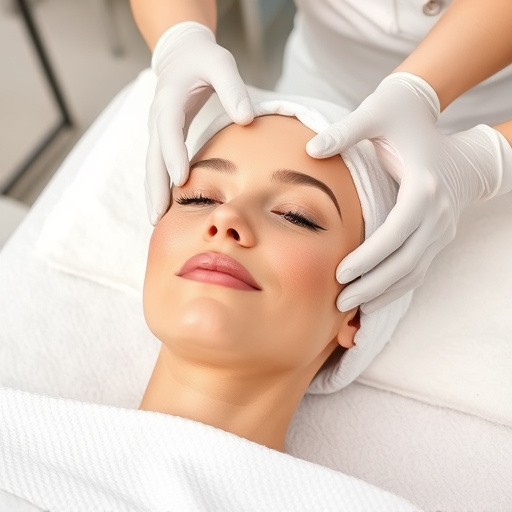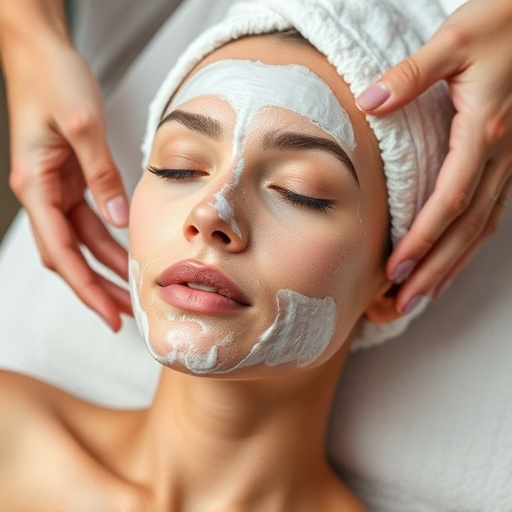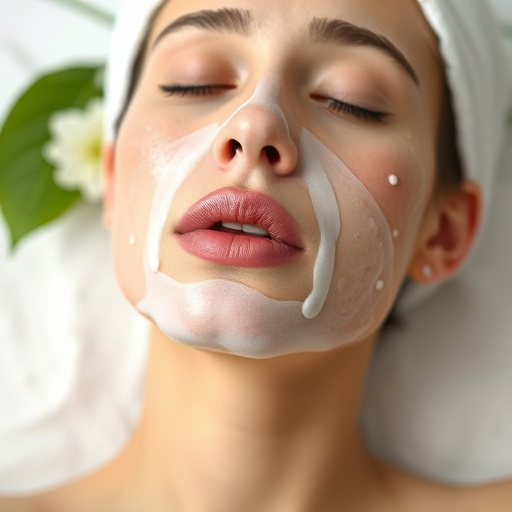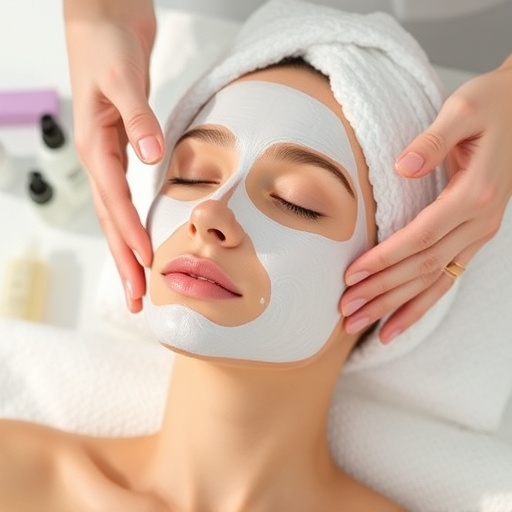An exfoliating facial is a crucial step in skincare routines, offering benefits like removing dead skin cells, unclogging pores, and enhancing overall skin health. Frequency varies based on skin type, environmental conditions, and recovery needs, with personalized recommendations from a dermatologist key. Incorporate gentle exfoliating facials every 1-2 weeks to maintain smooth, bright complexions; choose suitable exfoliants for your skin type and follow up with hydration. Consistent, tailored skincare routines featuring exfoliating facials are essential for radiant, healthy skin.
Discover the secrets to achieving radiant skin with a focused guide on exfoliating facials. Understanding exfoliation is the first step towards unlocking healthy, glowing skin. This process removes dead skin cells, allowing for better absorption of skincare products and promoting cell turnover. Factors like skin type, age, and environmental exposure influence how often you should schedule an exfoliating facial. Learn best practices to ensure your skin stays smooth and rejuvenated through regular sessions tailored to your needs.
- Understanding Exfoliation for Healthy Skin
- Factors Determining Exfoliating Facial Frequency
- Best Practices for Regular Exfoliation Sessions
Understanding Exfoliation for Healthy Skin
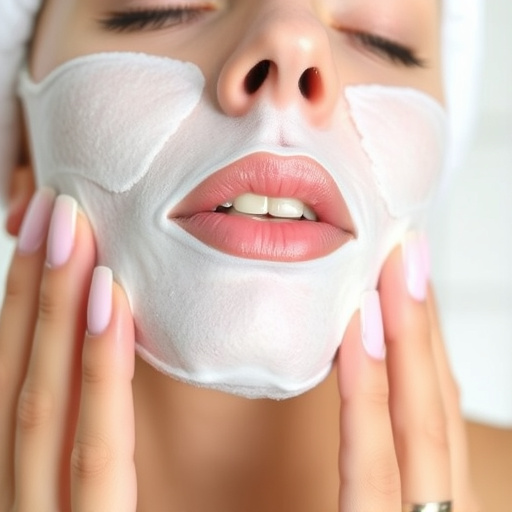
Exfoliation is a critical step in any skincare routine, aiming to remove dead skin cells and unclog pores, leaving your complexion smoother and brighter. It’s a process that involves gently sloughing off the outer layer of the skin, revealing the newer, healthier skin beneath. This not only enhances the appearance of the skin but also improves its overall texture and health. Regular exfoliation helps to prevent acne by reducing the buildup of sebum and dead skin cells in the pores.
Understanding the benefits of an exfoliating facial is key to maintaining a professional skincare routine. It’s a non-surgical treatment that can make your skin look and feel rejuvenated, promoting a more even tone and a tightened appearance. By incorporating this practice into your monthly or bi-weekly regimen, depending on your skin’s sensitivity, you can ensure your skin stays in top condition, allowing for optimal absorption of other skincare products.
Factors Determining Exfoliating Facial Frequency
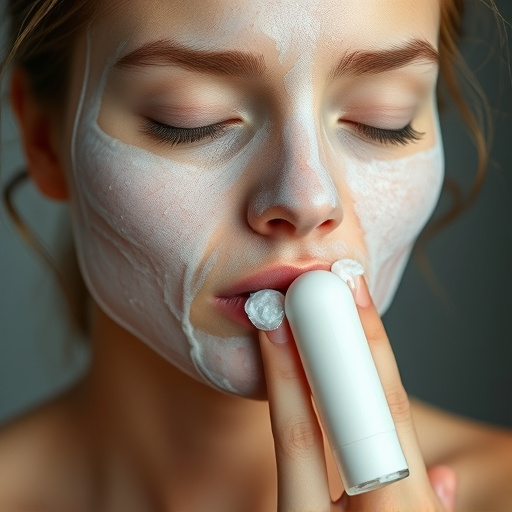
The frequency of an exfoliating facial largely depends on several factors. One of the most important considerations is your skin type; those with dry or sensitive skin may need to opt for gentler exfoliants and less frequent treatments to avoid irritation. On the other hand, individuals with oily or acne-prone skin might benefit from more regular sessions to maintain clear and balanced complexions. Environmental factors also play a role; living in regions with harsh weather conditions or high pollution levels can accelerate skin aging, making more frequent exfoliation beneficial for maintaining skin brightening and overall health.
Additionally, certain procedures like laser hair removal or intense skin tightening treatments may require specific skincare routines post-procedure, which could include more frequent exfoliating facials to enhance recovery and promote a smoother, more even skin texture. It’s always advisable to consult with a dermatologist or skincare specialist who can provide personalized recommendations based on your unique needs and goals.
Best Practices for Regular Exfoliation Sessions
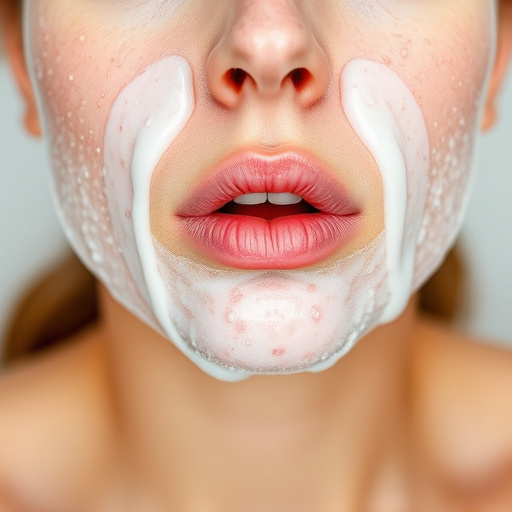
To maintain healthy skin, incorporate regular exfoliation into your skincare routine. Aim for a exfoliating facial every 1-2 weeks. This frequency allows for the gentle removal of dead skin cells while avoiding over-exfoliation, which can cause irritation. Start by choosing an exfoliant suited to your skin type—gentle chemical options are ideal for sensitive skin, while physical scrubs work well for more robust complexions.
During each session, focus on key areas like the forehead, nose, and cheeks. Take your time massaging the exfoliant in circular motions, paying close attention to any problem zones. Follow up with a hydrating serum or moisturizer to replenish moisture levels post-exfoliation. Remember, consistent personalized skincare practices, including regular exfoliation, are key to achieving and maintaining radiant skin, especially when coupled with targeted acne treatments and anti aging treatments.
In conclusion, incorporating regular exfoliating facials into your skincare routine can significantly enhance your skin’s health and appearance. By understanding the importance of exfoliation, recognizing personal skin needs, and adhering to best practices, you can achieve a radiant, balanced complexion. Remember, the ideal frequency for an exfoliating facial depends on various factors, so it’s essential to listen to your skin and consult professionals for personalized advice. Embrace the benefits of this transformative practice for a truly refreshing and revitalized visage.










